Living with a blind dog is a unique journey. It is a path of adaptation and profound connection. This journey will change you as a guardian. The diagnosis can feel overwhelming at first. But it opens a new chapter of communication. You will learn to use scent and sound. Your dog’s resilience will truly astound you. With the right guidance, you can create a confident home. This proves a vibrant life is defined by your bond.
„The day you learn your dog is going blind might feel devastating, but you might soon discover, as we did with the spaniel called Lucy, that your resilient best friend has been gracefully adapting long before you even realized it, ready to teach you a powerful lesson about love and perseverance.“
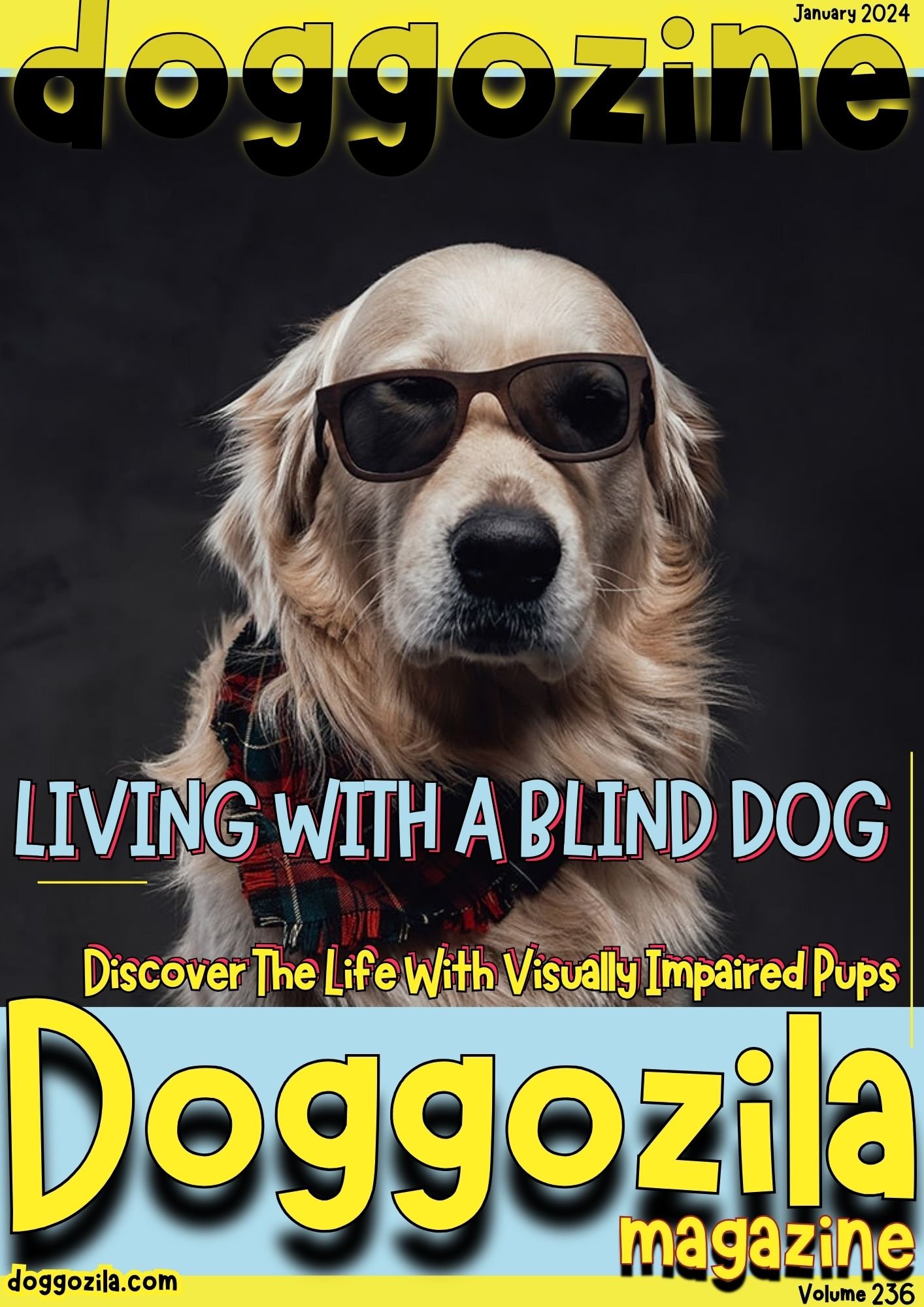
Quick Summary About HOW IS THE LIVING WITH A BLIND DOG
A diagnosis of blindness in a dog can be heartbreaking for an owner, but it is not the end of a happy life for your canine companion. Dogs possess an incredible ability to adapt, relying on their powerful senses of smell and hearing to navigate the world. This article will guide you through creating a safe and consistent environment, introducing new training cues, and enriching your blind dog’s life through toys and activities. With patience, love, and the right techniques, you and your blind dog can continue to share a deep, rewarding bond.
HOW IS THE LIVING WITH A VISUALLY IMPAIRED OR BLIND DOG?
Just as we grow old, our pets age, and they may experience various health issues, including vision problems such as losing their sight. It can be a challenging and emotional time for both the pet and their owner. However, with the right knowledge and care, living with a visually impaired or blind dog can be a rewarding experience.
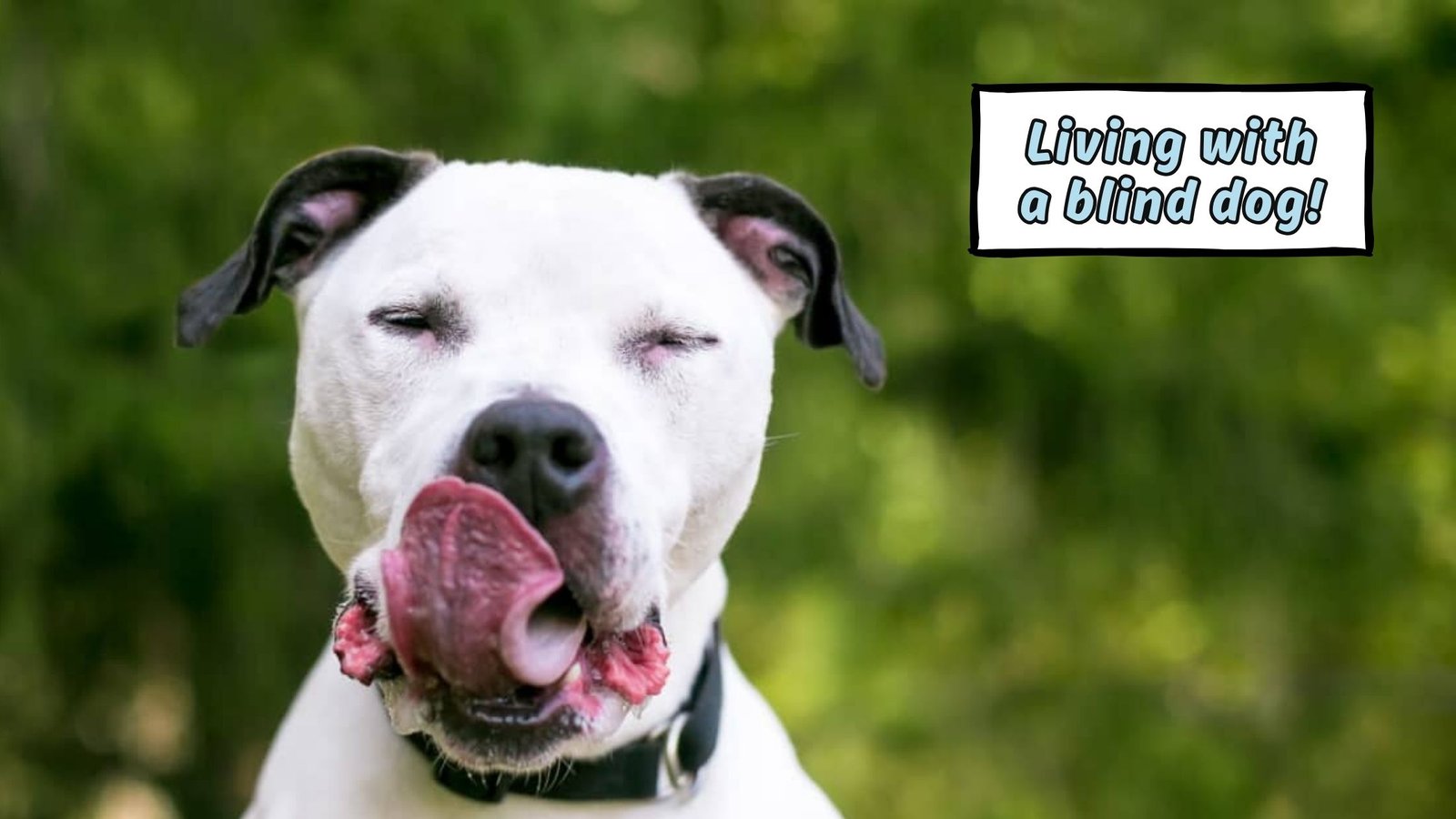
UNDERSTANDING VISION LOSS IN DOGS
Before we delve into the practical aspects of living with a visually impaired or blind dog, it’s essential to understand the causes of vision loss in dogs.
What Are Some Common Reasons For Vision Loss in Dogs?
- Cataracts
- Progressive retinal atrophy
- Glaucoma
- Age-related macular degeneration
It’s crucial to consult with a veterinarian to determine the underlying cause of your dog’s vision loss and explore any available treatment options.
Creating a Safe Environment When You Are Living With a blind dog
When living with a visually impaired or blind dog, creating a safe environment is paramount.
Here are some tips to ensure their safety:
- Keep the environment consistent: Avoid rearranging furniture and objects to prevent your dog from bumping into them.
- Use scent cues: Place scented markers or essential oils near objects or areas that your dog needs to navigate, such as food and water bowls or the entrance to the backyard.
- Install baby gates or barriers: Use these to restrict access to stairs or other areas that may pose a risk to your visually impaired or blind dog.
- Remove hazards: Ensure that the floor is free from clutter, loose wires, or any other objects that could trip or injure your dog.
How to Talk and Train Your blind dog?
Good communication and training are key when living with a dog who can’t see.
Here are some tips to talk with your furry pal:
- Verbal cues: Use consistent verbal cues to guide your dog. For example, use words like “step up” or “step down” when approaching stairs.
- Touch cues: Incorporate touch cues such as gentle taps or pats on their shoulder or back to indicate directions or commands.
- Clicker training: Consider using a clicker to reinforce positive behavior and help your dog understand commands.
- Positive reinforcement: Reward your dog with treats and praise when they exhibit desired behavior. This will help them associate positive experiences with certain actions.
Remember, training a visually impaired or blind dog requires patience and consistency. Always ask for guidance from a professional dog trainer if needed.
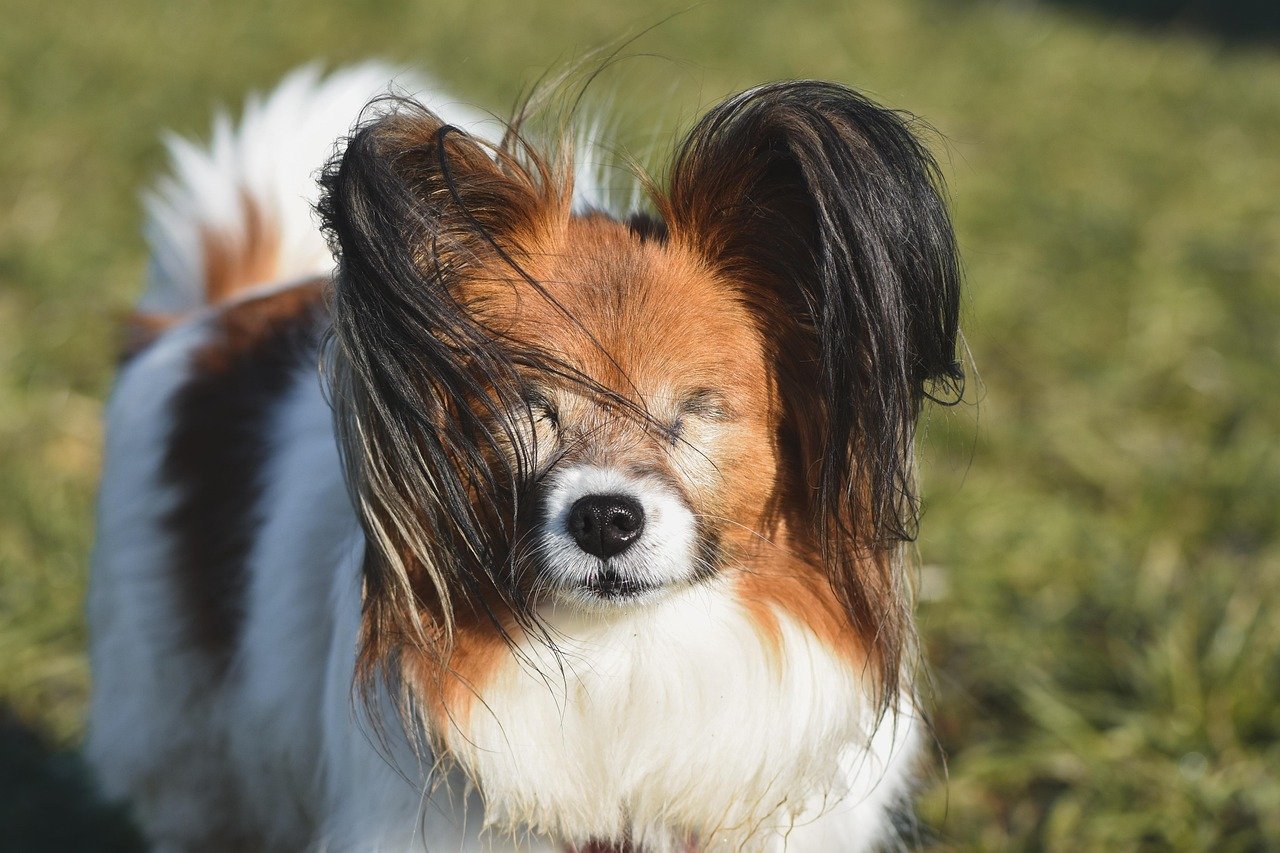
INNOVATING BLIND DOG TRAINING: BEYOND THE LIVING BASICS
While establishing a routine and using verbal cues are foundational, modern training for blind dogs is evolving. By thinking creatively, we can build their confidence and strengthen our bond in remarkable ways.
The “Scent-Scape” and “Sound-Scape” Mapping
Instead of just keeping furniture in the same place, actively build a mental map for your dog using scent and sound. This turns your home from a potential obstacle course into a rich, navigable landscape.
- Scent-Scape: Use different, non-irritating natural scents to mark key areas. For example, rub a drop of vanilla essential oil on the leg of the coffee table, lavender near their bed, and chamomile by the door to the garden. During training walks, introduce these scents on specific trees or poles to help them learn regular routes.
- Sound-Scape: Use consistent sounds as landmarks. A small, gentle wind chime by the back door, a quietly ticking clock in the living room, or a radio talk show left on in the kitchen gives your dog auditory reference points to orient themselves from anywhere in the house.
The “Check-In” Cue: Building a Deeper Connection
A “check-in” is a behavior where your dog voluntarily turns their attention to you. For a blind dog, this is a powerful tool against anxiety and reactivity.
- Start at Home: In a quiet space, say your dog’s name followed by a cue like “Check in.” The moment they turn their head toward you, mark it with a clicker or a distinct word like “Yes!” and reward with a high-value treat.
- Practice on Walks: On a leash, use the cue before potential stressors, like when another dog is approaching. When your dog checks in with you, reward them generously. This teaches them that focusing on you is more rewarding than worrying about the unknown.
- The Result: This behavior transforms walks. Your dog learns to look to you for guidance and reassurance, drastically reducing startle responses and building their overall confidence.
Case Study: Helena – The Puppy Who Reshaped Reactivity Training
Helena, a puppy born blind, exhibited common behavioral issues like reactivity to other dogs and mild resource guarding. Her guardian, a professional trainer, applied innovative adaptations of proven techniques.
- Adapting “Look at That”: “Look at That” (LAT) is a classic game for reactive dogs where the dog looks at a trigger and then back at the owner for a reward. For Helena, the cue “There’s a dog” was used the moment the handler sensed another dog nearby. When Helena acknowledged the sound or smell and then turned her attention back to her handler, she was clicked and treated.
- The Innovative Twist: This protocol used classical conditioning to change Helena’s emotional response. The phrase “There’s a dog” became a predictor of good things (treats!), rather than a warning of something scary. This proactive approach helped Helena feel informed and secure, mitigating her fear-based reactions.
- The Takeaway: Helena’s story is powerful because it proves that a blind dog’s behavioral challenges shouldn’t be dismissed as a simple consequence of their blindness. They can benefit from the same sophisticated behavior modification techniques as sighted dogs, with thoughtful adaptations.
Essential Gear You Need If You Are Living with A Blind Dog
Having the right tools can make a world of difference in your dog’s safety and independence.
| Gear Type | Primary Function | Key Benefit |
| Halo Harness | Protective bumper that detects obstacles | Prevents collisions with walls and furniture, building confidence. |
| Comfort Harness | Secure attachment for walks | Offers gentle control and clear communication during navigation. |
| Audible Tags/Bells | Makes your dog’s location known | Helps you keep track of them and allows other pets to hear them approach. |
| Puzzle Toys with Sound | Mental stimulation and play | Engages their sense of hearing and smell for enrichment and fun. |

EXERCISE AND FUN FOR BLIND DOG
All dogs need exercise and fun things to do, even ones who can’t see.
Ideas to Keep Your Blind Dog Active and Entertained
- Take short walks in places they know. Let them smell and explore.
- Play smell games. Hide scented toys or treats for them to find.
- Play games! Give your dog puzzle toys with treats inside. They need to use their brain to get the snacks.
- Train your dog regularly. It keeps them smart and makes you closer.
Tools to help blind dogs
There are things to help blind dogs move around:
- Halos and vests protect dogs from bumping into things.
- Put braille signs on stuff at home. This way your dog knows where they are.
- Use scents or sounds to mark areas or objects. It helps dogs find their way.
- Join groups online or nearby with other owners of blind dogs. You can share tips.
Support for you and your blind dog
Caring for a blind dog can be hard.
Make sure you get help too:
- Talk to vets who know about blind dogs. They can advise you.
- Tell friends and family your struggles. They can listen and comfort you.
- Consider therapy: If you find yourself struggling emotionally, consider seeking therapy or counseling to help you navigate the challenges of caring for a visually impaired or blind dog.
Living with a visually impaired or blind dog requires patience, understanding, and adaptability. By creating a safe environment, communicating effectively, providing appropriate exercise and enrichment, utilizing assistive devices, and seeking emotional support, you can ensure a fulfilling and happy life for both you and your furry companion.
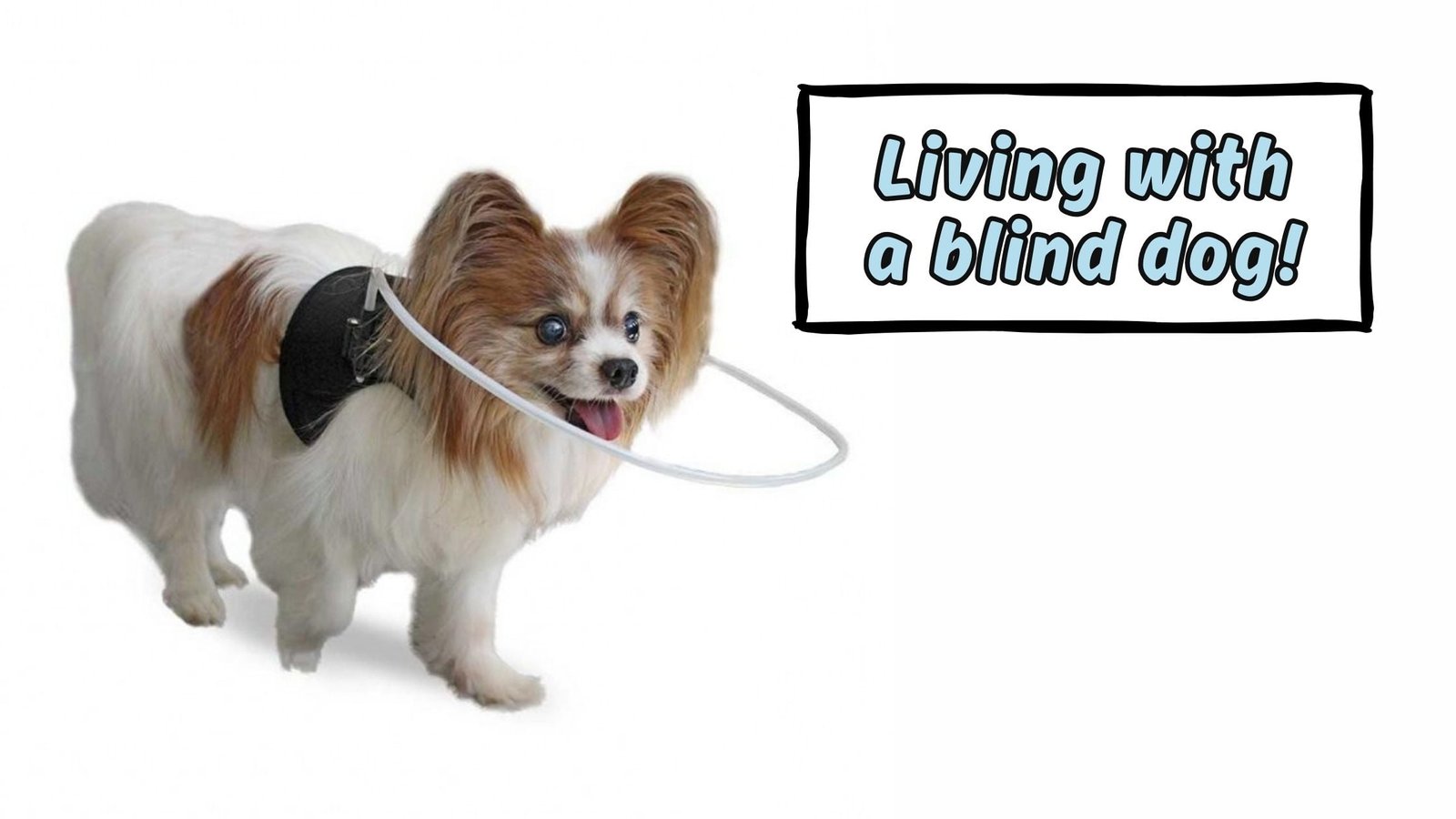
TIPS AND ADVICE FOR OWNERS LIVING WITH A BLIND DOG
Keeping Your Blind Dog Happy and Healthy
Discovering that your beloved furry friend has become blind or has been blind since birth can be a challenging experience for any dog owner. However, with the right knowledge and guidance, you can ensure that your blind dog leads a fulfilling and happy life. Today we will provide you with valuable tips and advice on how to care for your blind dog, keeping them healthy, safe, and content.
Understanding Your Blind Dog’s Needs
Before diving into specific tips and advice, it’s crucial to understand the unique needs of blind dogs. Dogs rely heavily on their senses, especially their vision, to navigate the world around them. When a dog loses their sight, their other senses, such as hearing, smell, and touch, become even more important.
Blind dogs require a safe and predictable environment to thrive. They rely on familiar scents, sounds, and textures to navigate their surroundings. As a responsible owner, it’s essential to create a consistent routine and provide them with the necessary support and accommodations.
Making a Safe Space for Your Blind Pup
The first step to care for a blind dog is making their area safe. No dangers allowed!
Here are some tips:
- Clear the Area: Remove things your dog can bump into or trip over. A tidy space prevents accidents.
- Block Off Danger Zones: Use gates or barriers to keep your pup away from stairs, balconies, or other risky spots.
- Secure the Yard: Make sure your outdoor space has a sturdy fence so your blind buddy can’t wander off.
- Add Smelly Markers: Place scented oils or drops on objects to help your dog sniff out important places.
Keeping a Routine for Your Blind Companion
Blind dogs feel calmer with a regular schedule. Having set daily tasks gives them security.
What to Consider:
- Mealtimes: Feed your dog at the same times daily. Use word cues or place bowls in a fixed spot.
- Walking Routes: Choose routes you can repeat so your dog learns the smells and sounds along the way.
- Potty Breaks: Take your dog to pee and poop in the same area each time. Use words to signal what this place is for.
- Playtime fun: Do games and get exercise with your blind pup. Use toys that make noise or smell good.
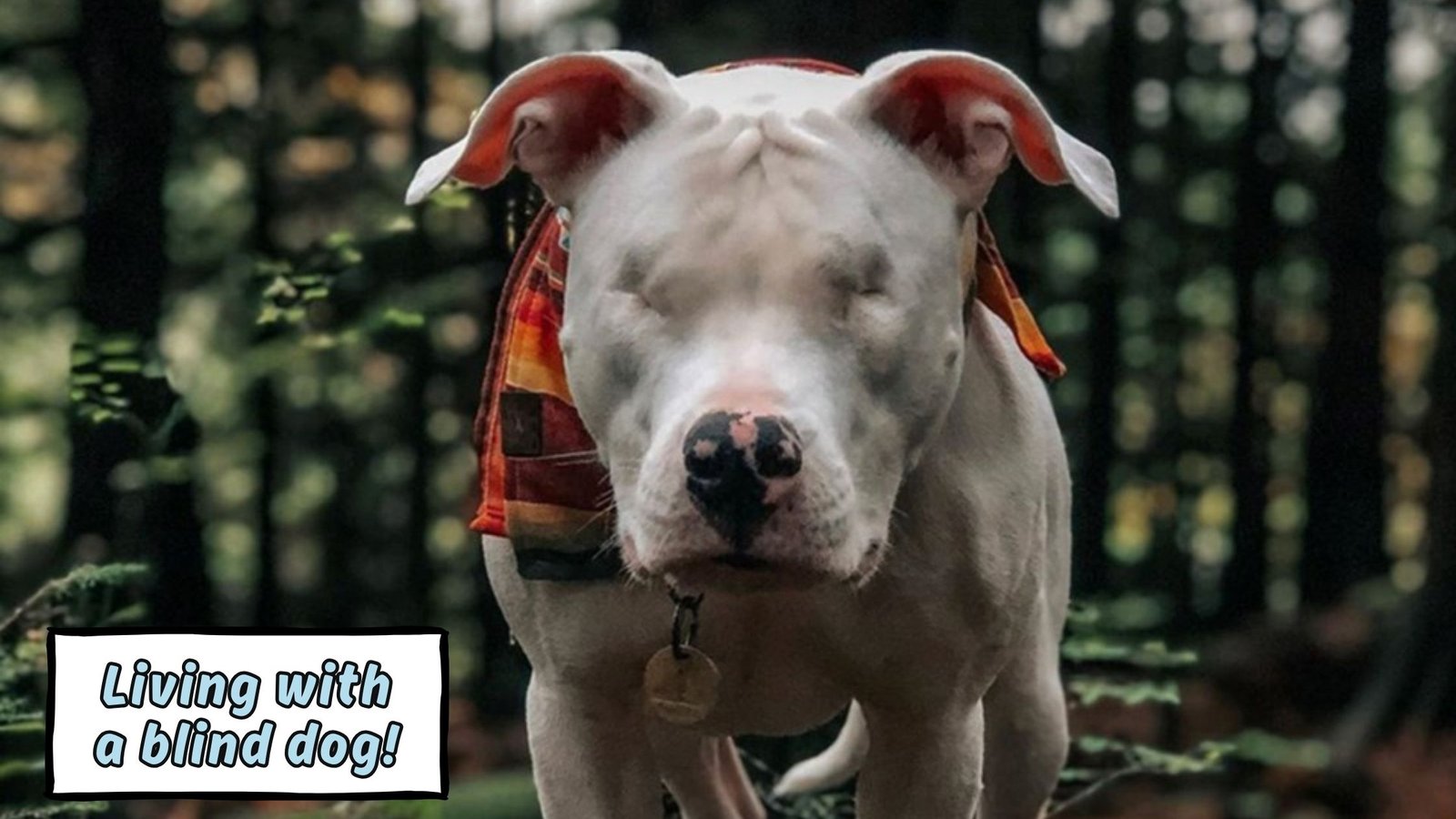
HELPING BLIND DOGS UNDERSTAND YOU BETTER
It’s key to communicate well with a blind dog. Since they can’t see you, find other ways to bond and give them information.
Tips for Better Communication with Your Blind Dog
- Use the same words: Say words like “sit,” “stay,” or “come” so your pup knows what to do.
- Guide with gentle touch: Tap their shoulder lightly to show them a new direction when walking.
- Use familiar smells: Put certain scents on their bed or toys so they recognize them.
- Praise and treats: Give your pup praise and yummy treats when they do something good. This helps them learn.
Fun Activities to Keep Their Mind Active
Blind dogs need activities to stay entertained and sharp.
Here are some ideas to keep their mind busy:
- Sniff games: Your pup has an amazing sense of smell. Hide smelly treats or toys for them to find.
- Getting puzzle toys can help your blind dog think and solve problems. These toys hide treats or make your dog move things to get rewards.
- Keep training your blind dog with good ways to learn. Teach them new commands and tricks to make their minds work hard.
- Play games with your blind dog using toys that make sounds or have different textures. This will keep your dog interested and entertained.
Regular Veterinary Visits
Like all dogs, blind dogs need to see the vet regularly to stay healthy.
Here are some important things to think about:
- Check your dog’s eyes even if they can’t see. Regular vet visits can catch any problems or infections.
- Take your dog for check-ups to make sure they are healthy, get vaccinations, have their teeth cleaned, and stay at a good weight.
- Give your blind dog any medicine or supplements the vet recommends if they have health issues.
Love, Patience, and Change
Caring for a blind dog needs patience, love, and being able to change. Remember that your dog’s blindness does not define them. With your help, they can still have a happy and good life. Enjoy the journey and the special connection you have with your blind dog.
What to Know About Having a Blind Dog
Though having a dog that can’t see might seem hard, you can give them a good life if you take the right steps. Make your home safe by removing things they could bump into or trip over. Also, keep their area free of clutter.
Set a routine so they know when it’s time for meals, walks, and playtime. Use words and sounds to communicate with your dog. Give them toys that make noise or have different textures. Take them on walks but keep them on a leash. See the vet regularly to check for any health problems.
Key Facts About Blind Dogs
A dog’s primary sense is smell, not sight. Their powerful nose guides their world. Hearing is their second strongest sense. They can hear a treat bag from far away. Blind dogs build detailed mental maps of their homes. They memorize furniture layouts perfectly.
Many are born blind from birth defects. Others lose vision from age or disease. They sleep deeply and may startle when woken. A gentle voice prevents this fear. Their brain can rewire for better navigation. This is called neuroplasticity. They live full, happy lives with love.
Final Thoughts About Living with A Blind Dog
Living with a blind dog teaches profound lessons. Your patience and love become their compass. Their resilience will inspire you every single day. A blind life is still a wonderful life. Your bond will grow deeper and more meaningful.
Celebrate every small victory together. Your home is full of love, not limitations. The journey is challenging but incredibly rewarding. Your blind dog is still your whole, happy dog.
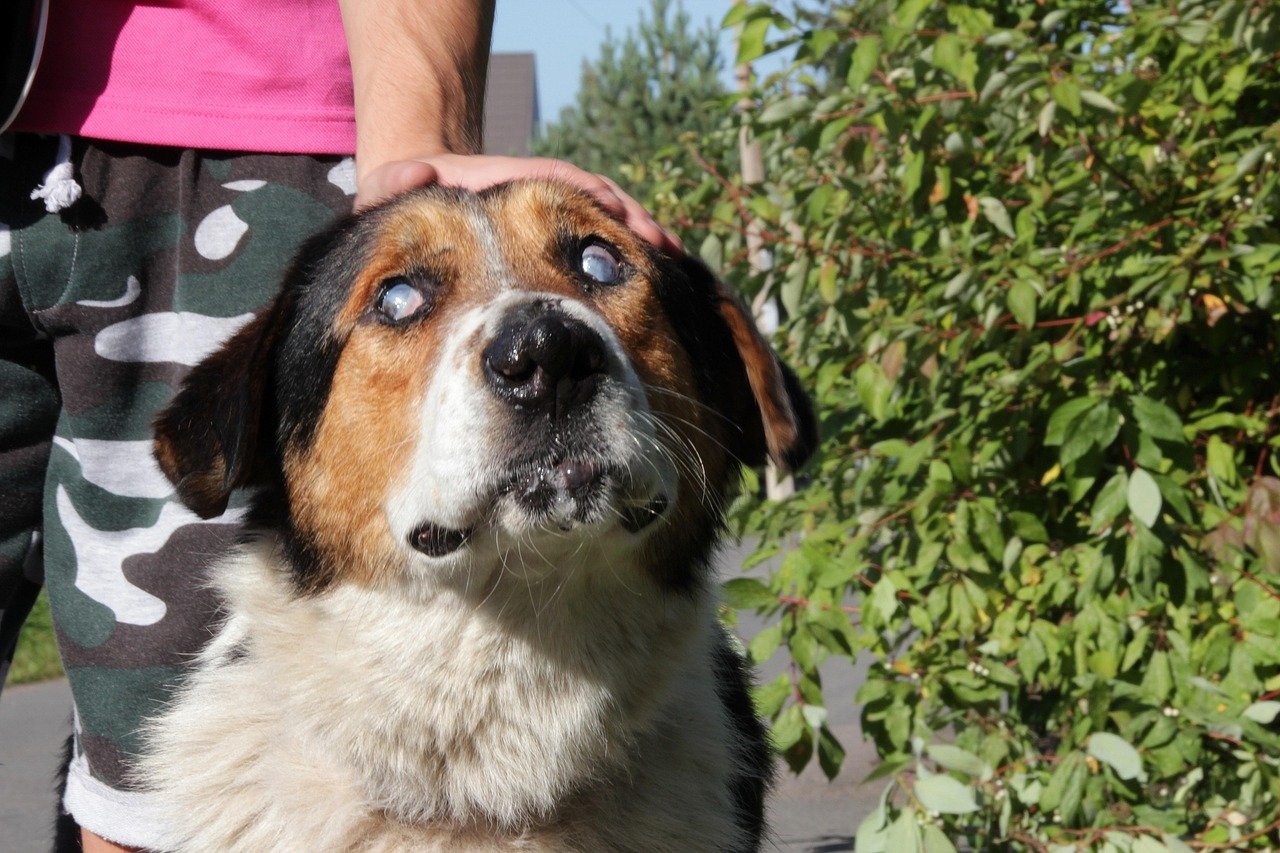
FREQUENTLY ASKED QUESTIONS
Want to learn more? Look into caring for pets without sight!









